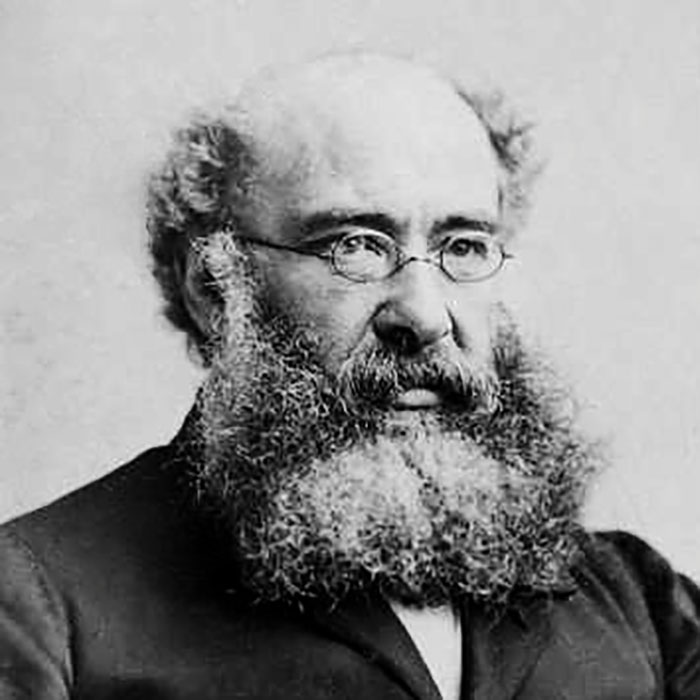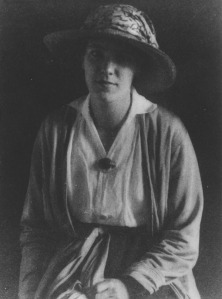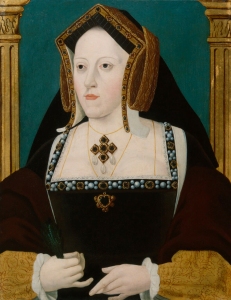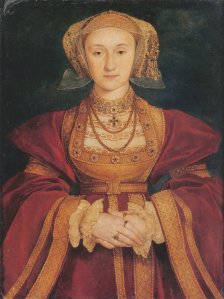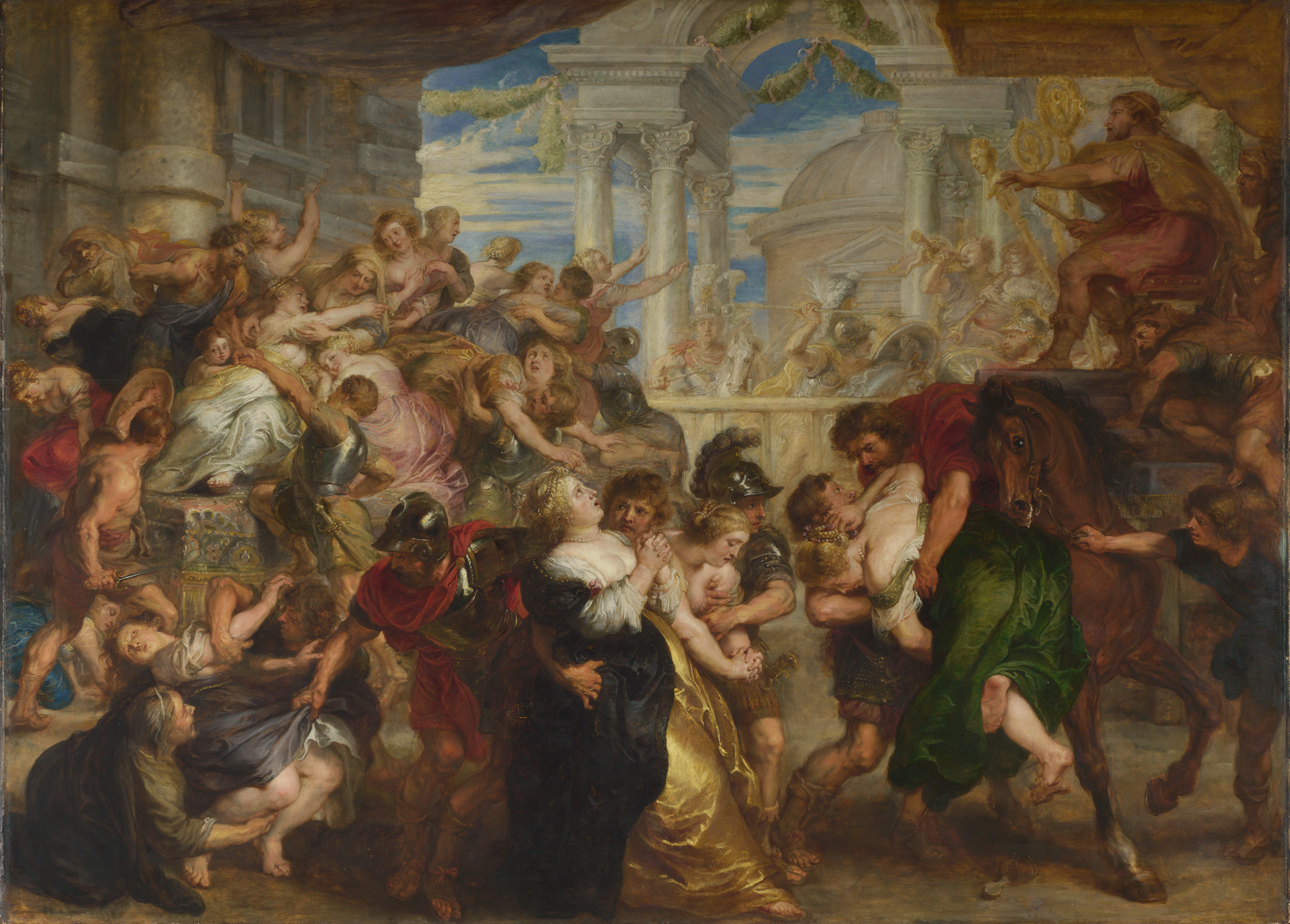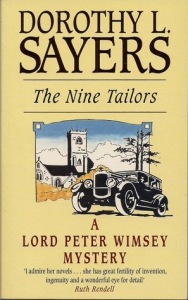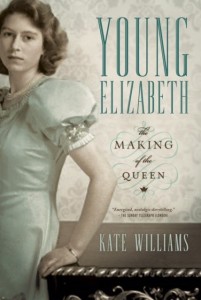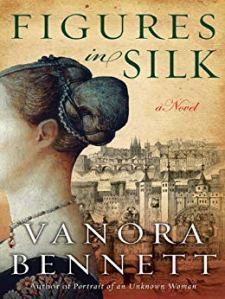Better Luck with Nonfiction, Part One
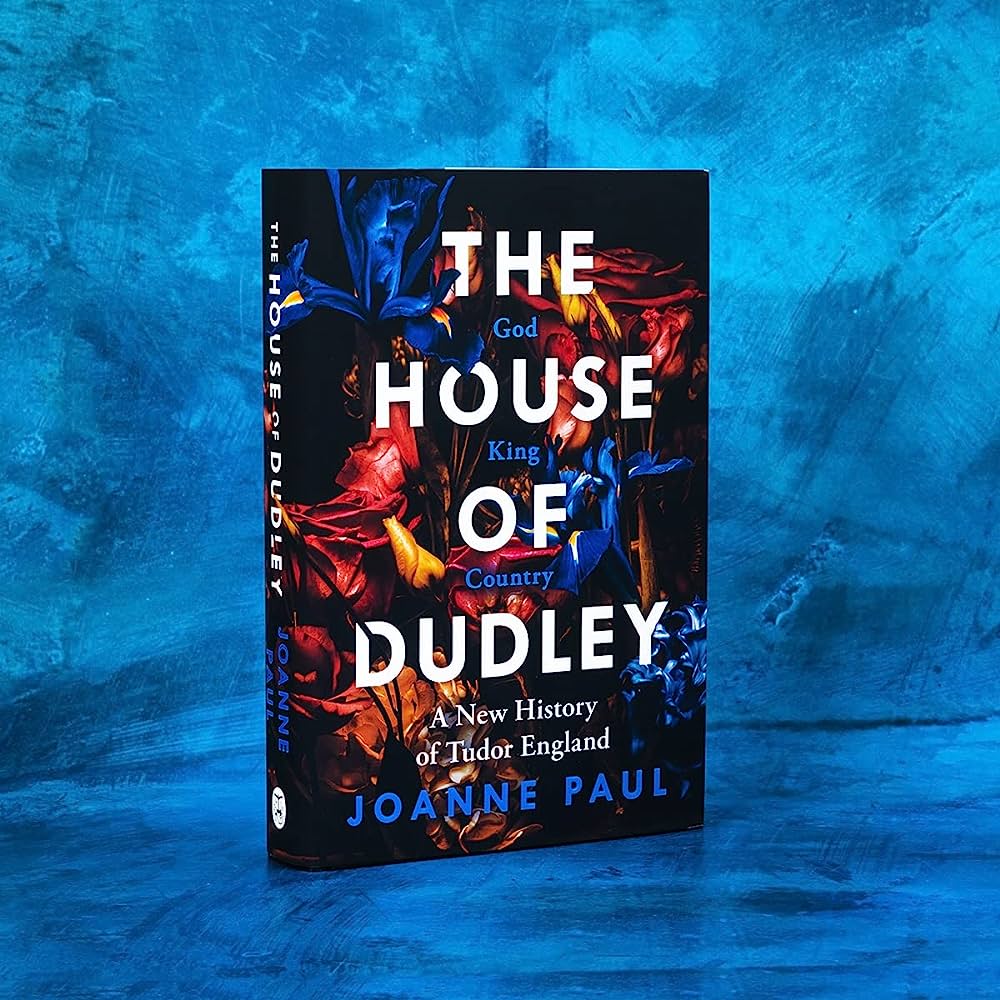
*********************************
The House of Dudley is easily one of the most readable histories I’ve encountered in a long time. I surprised myself by racing through this book. Elizabeth, starring Cate Blanchette and Joseph Fiennes, is one of my all time favorite films. The love story of Elizabeth and Robert Lord Dudley is endlessly fascinating. It provided the impetus for my reading of The House of Dudley, which actually covers the whole period of the reign of the Tudor dynasty. The love story is an admittedly small part of that story – small but crucial.
Delicious clips from the movie – like the one below – are easily found on YouTube.
******************************
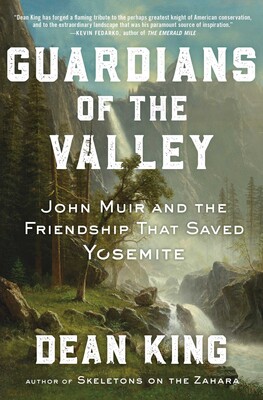
From the Kirkus review:
‘Scottish immigrant and Sierra Club founder [John] Muir and conservation-minded President Theodore Roosevelt are remembered as the saviors of Yosemite and the neighboring redwood-rich slopes of California’s Sierra Nevada.’
The book contains a memorable – and frequently reproduced – photograph of the two of them, taken while they were camping in Yosemite:

Actually, Roosevelt is but a secondary presence in this narrative. The other main character is Robert Underwood Johnson, editor of The Century Magazine and passionate advocate of conservation. Johnson was a member of the East Coast intellectual elite and rarely traveled west; the opposite, of course, was true of John Muir. nevertheless, Johnson and Muir became close friends and carried on a spirited correspondence, much of which is transcribed in these pages. (Amazing what people could accomplish without cell phones.) Together, they saved much of the irreplaceable beauty of California.
We have these two indefatigable fighters to thank for preserving this precious place. (The fight, needless to say, is ongoing.)
(Never been there myself; hope to go some day.)
Crime Fiction in the Grand Tradition: Moonflower Murders by Anthony Horowitz
 What do I mean by ‘the grand tradition?” Well, I mean that Moonflower Murders is a whodunnit in the classic mode of Agatha Christie and her legion of imitators. Not that I would call Anthony Horowitz an imitator as such. On the contrary, he’s one of the more creative minds at work in the crime fiction field at the present time.
What do I mean by ‘the grand tradition?” Well, I mean that Moonflower Murders is a whodunnit in the classic mode of Agatha Christie and her legion of imitators. Not that I would call Anthony Horowitz an imitator as such. On the contrary, he’s one of the more creative minds at work in the crime fiction field at the present time.
Susan Ryeland is a former editor and publisher. As this novel opens, she is running a hotel and the island of Crete, along with her lover Andreas. (To find the reason for her sudden career switch, one must read Magpie Murders – a delightful task!) Susan finds herself summoned back to England to help uncover the truth about the murder of a hotel guest named Frank Parris. The killing occurred in 2008 at Branlow Hall, an inn on the Suffolk coast. Adding urgency to the situation is the fact that Cecily Treherne, the daughter of Pauline and Lawrence Treherne, the hotel’s owners, has recently gone missing.
In her time as an editor, one of Susan’s authors had been Alan Conway, writer of a popular series of mysteries featuring Private Investigator Atticus Pund. Intrigued by the killing at Branlow Hall, Conway decides to make use of the crime in his next novel, to be entitled Atticus Pund Takes the Case.
Cecily Treherne is married and the mother of a little girl. Before vanishing, she stated that she had unmasked the true identity of the murderer of Frank Parris. How had she done this? By stumbling upon a crucial clue in Alan Conway’s novel.
Susan Ryeland realizes that in order to solve this present-day mystery, she must solve the past one as well. And to finally arrive at the truth concerning both, she must revisit an experience that torpedoed her life’s work in 2008: She has to read, for the second time, Atticus Pund Takes the Case.
And so she does, and so do we, right along with her. For this is not one book but two: The complete text of Alan Conway’s novel is contained within the pages of Moonflower Murders. I cannot forebear to mention that within the pages of Atticus Pund Takes the Case, I came across a reference that delighted me. It concerns the diminutive detective’s choice of reading matter to take on a rail journey:
Pund passed the time absorbed in a study that he had received from the highly respected American Academy of Forensic Sciences: an examination of the so-called Nutshell Studies of Frances Glessner Lee, who had constructed intricate models of complicated crime scenes in order to analyse them.
I first became aware of the Nutshell Studies when I was doing research for a course I taught several years ago. It was called Stranger Than Fiction: The Literature of True Crime. As for Frances Glessner Lee, she became, almost accidentally, a pioneer in Forensic Science. I was fortunate enough to see the Nutshell Studies two years ago when they were exhibited at the Renwick Gallery.
Meanwhile, on the same train trip alluded to above, Pund’s secretary Miss Cain was reading A Daughter’s a Daughter by Mary Westmacott. Mary Westmacott is a pseudonym used by Agatha Christie for works she wrote that were not in the crime fiction genre.
Moonflower Murders is a regular romp of a novel. It contains no larger lessons about the human condition, at least none that I could readily detect. It was written to entertain, and it succeeds beautifully. It’s long – some 580 pages – but I tore through it in a matter of days.
Anthony Horowitz is the creator of the tv series Foyle’s War; in addition, he wrote eleven episodes of Agatha Christie’s Poirot and six episodes of Midsomer Murders. He’s the author of the popular Alex Rider series for young adults as well as numerous other novels and plays. I’ve said it before and I’ll say it again: If there were an Anthony Horowitz Fan Club, I’d be in it.
‘Another silence, broken by the sound of waves and the long call of gulls.’ – The Long Call by Ann Cleeves
 When I first found out that Ann Cleeves was starting yet another series, I was dismayed. I want more Vera! I moaned to myself (and to anyone else within range). I was ready to give this book a pass, only the reviews were so exemplary that I changed my mind.
When I first found out that Ann Cleeves was starting yet another series, I was dismayed. I want more Vera! I moaned to myself (and to anyone else within range). I was ready to give this book a pass, only the reviews were so exemplary that I changed my mind.
Also I was desperate for a British police procedural with some depth, and I was pretty sure I could depend on Cleeves to deliver. I was right.
This protagonist of this series is Matthew Venn. Estranged from his own parents, he lives with his husband Jonathan in a cottage in North Devon. They are well suited, and happy together. But Matthew’s vocation as detective places heavy demands on his time, and on his attention. The Long Call is the story of a mysterious death, the investigation of which becomes increasingly tangled as Matthew pursued various leads. The cast of characters includes several artists, as well as others whose lives have crossed at some point with that of the victim. They are each interesting people in their own right.
The author has placed an open letter to her readers before the novel actually begins. It begins with a statement that is almost a plea for patience and understanding:
…I feel nervous introducing Matthew Venn to you, almost like a teenager bringing a new girlfriend or boyfriend home for the first time.
Cleeves also explains that she spent a large part of her childhood in North Devon and so is happy to be back there and writing about it. On the page opposite this letter is a map of the region, a courtesy deeply appreciated by many readers. One of the strong points of this very strong novel is the vivid way in which Cleeves portrays this setting.
Ann Cleeves has a great way of enlarging on a person’s character by showing how he or she reacts to an particular situation. Here Jen Rafferty, Matthew’s second-in-command, is being shown the rooms in a church where group therapy takes place:
There were posters on the walls, semi-religious imagery of rainbows and doves, slogans about taking power, and loving the inner you. Here it seemed hope and the possibility of redemption abounded. It made Jen feel like punching someone.
In the most recent issue of Deadly Pleasures Mystery Magazine, critic Kristopher Zgorski says this:
As far as titles go, The Long Call works so well because it not only harkens to the bird-watching elements that so often play a part in the works of Ann Cleeves, but in this case it also speaks to the long reach of trauma and the toxic legacy of conspiracy and cover-up at the heart of this book.
Zgorski also reveals the welcome news that this work has already optioned for television. If the result is as good as the Vera series and the Shetland Island series featuring Jimmy Perez, then we have much to look forward to.
Oh – and there is another Vera in the works: The Darkest Evening, due out September 8.
***********************
This is probably as good a place as any to mention that the issue if Deadly Pleasures to which I’ve just alluded is the last one that will appear in hard copy. I very much regret this change, but I understand the necessity. The magazine is a terrific resource for fans of crime fiction. For more information, visit the newly revamped Deadly Pleasures website. To begin a subscription, see this link.
‘The archdeacon’s speech had silenced him – stupefied him – annihilated him; anything but satisfied him.’ – The Warden, by Anthony Trollope
Just look at this wonderfully hirsute gentleman! (Always looking for an excuse to use that word ‘hirsute’ ) Among a (large) number of other works, Trollope is the author of the Chronicles of Barsetshire, a series of six books describing, in the words of the Wikipedia entry,
…the dealings of the clergy and the gentry, and the political, amatory, and social manœuvrings that go on among and between them.
The novels in the series are:
- The Warden (1855)
- Barchester Towers (1857)
- Doctor Thorne (1858)
- Framley Parsonage (1861)
- The Small House at Allington (1864)
- The Last Chronicle of Barset (1867)
(Again, thank you, Wikipedia.)
Quite a few years ago, I read three of them: Barchester Towers, Doctor Thorne, and Framley Parsonage. I enjoyed them all. The first is probably the most famous; I began with it, without realizing that it was the second entry in a series. Then off I went, on some other literary quest, undoubtedly devouring mysteries all the while, or at least since 1987, when I went to work at the Howard County Library and was instructed in the utter rightness and necessity of reading crime fiction. (And what a long, strange, completely wonderful trip that has been!)
So, why did I go back back to this saga? This literary turn may fairly be ascribed to the writings of one Michael Dirda, star of the Washington Post’s Book World and resident intellectual in a distinctly nonintellectual environment. In a recent article (which alas, I’ve been unable to retrieve), Dirda cited a scene in Framley Parsonage as being especially memorable and beautifully rendered. Inspired by this encomium, I decided to reread said volume.
This was such a thoroughly enjoyable experience that I decided to go back to the beginning, as it were, and tackle The Warden.
The Reverend Septimus Harding is as good and decent a man as one would ever hope to encounter, in fiction or in real life. He has two daughters: Susan ,the elder, who is married to Archdeacon Grantley, and the younger Eleanor who still lives at home with him. (Eleanor’s unwavering devotion to her father is one of the most moving aspects of this novel.)
The Reverend Harding serves as warden to a hospital (what we would call a nursing home) which houses twelve elderly gentlemen who are beyond their working years and have no other family to care for them.
All their wants are supplied; every comfort is administered; they have warm houses, good clothes, plentiful diet, and rest after a life of labour; and above all, that treasure so inestimable in declining years, a true and kind friend to listen to their sorrows, watch over their sickness, and administer comfort as regards this world, and the world to come!
From this labor, the veritable opposite of onerous, Rev. Harding derives a comfortable income. Yet it is that income, as supposedly specified in the will of a deceased well off parishioner, that becomes the major issue of dispute in this novel.
The Warden, which is so often entertaining, humorous, and sunny, depicts a crisis of conscience more excruciating than almost any I have encountered anywhere in fiction. (In fact, I’m reminded, in that regard, of Brat Farrar by Josephine Tey.)
I’d like to close on a lighter note, one which illustrates the sly wit for which Trollope is noted and treasured (and that wit is never deployed in a vulgar or mean-spirited manner):
The bishop did not whistle; we believe that they lose the power of doing so on being consecrated; and that in these days one might as easily meet a corrupt judge as a whistling bishop;…
Square Haunting: Five Writers in London Between the Wars, by Francesca Wade
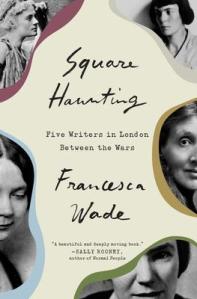 From the last section of Square Haunting:
From the last section of Square Haunting:
In a sketch titled “London in War,” [Virginia Woolf] commented on the eeriness and disorientation of living in the city under siege: “Everybody is feeling the same thing: therefore no one is feeling anything in particular. The individual is merged in the mob.”
Now, walking the streets was a continual danger, maintaining the house a draining responsibility, the city ruled by an atmosphere of silence and suspicion. London, she wrote, “has become merely a congeries of houses lived in by people who work. There is no society, no luxury no splendour no gadding & flitting. All is serious & concentrated. It is as if the song had stopped—the melody, the necessary the voluntary. Odd if this should be the end of town life.”
****************Woolf wrote movingly in her diary of the surreal quality of the blacked-out city, which seemed “a reversion to the middle ages with all the space & the silence of the country set in this forest of black houses”: “Nature prevails. I suppose badgers & foxes wd come back if this went on, & owls & nightingales…”
And nowadays, Kashmiri goats, too…
Anyway, I wanted to begin this review by quoting the above passages (and sharing that video) because I thought they seemed strangely relevant to the present moment.
**********************
What a wonderful book this is! A delight for both the sense and the intellect, Square Haunting tells the story of five women as they struggle to find their place in the realms of academia, publishing, and public life in general. This endeavor has as its chief backdrop the tumultuous era between the two world wars. The author’s delineation of this fraught period is one of the book’s great strengths.
Here are the five women. in the order in which their stories are told:

Dorothy L. Sayers, creator of Lord Peter Wimsey and Harriet Vane, 1893-1957; she was also scholar of religion and French and Italian literature. She wanted very much to be known for these latter accomplishments, especially her translation of Dante’s Divine Comedy
At one time or another, each of these women lived in Mecklenburgh Square, an area of London located within the Bloomsbury District in London’s West End. It is this happenstance that caused Francesca Wade to group them together in this book. Although there was little, if any, interaction among them, they faced many of the same challenges, both in their professional and personal lives.
Also, they all produced trenchant and insightful prose.. Here is H.D. upon entering her war-damaged apartment:
“We came home and simply waded through glass,” she recalled, “while wind from now unshuttered windows made the house a barn, an unprotected dug-out. What does that sort of shock do to the mind, the imagination—not solely of myself, but of an epoch?”
********************
Wade gives us this description of Dorothy L. Sayers’s experience at Oxford:
Sayers’s contemporaries remembered tepid water, unpleasant food, and a general atmosphere of restriction, since their academic and social behavior was under constant scrutiny from opponents eager to cite the slightest misdemeanor as ammunition to demand a revocation of women’s place at Oxford. A female student recalled a don who began his classes “Gentlemen—and others who attend my lectures,” and another who insisted that the women sit behind him so he didn’t have to see them as he declaimed. Articles in the press constantly feigned concern that women were overworking, and that their minds and constitutions were not geared to such intensive toil.
This was the battle – or, one of the battles – Sayers was fighting when she wrote Gaudy Night, the culminating novel in the Wimsey/Vane series. These are the thoughts entertained by Harriet Vane, as she approaches the precincts of Shrewsbury College, Oxford, her alma mater:
They can’t take this away, at any rate. Whatever I may have done since, this remains. Scholar; Master of Arts; Domina; Senior Member of this University;… a place achieved, inalienable, worthy of reverence.
Indeed, so.
Meanwhile, of course, she’s trying to reconcile her life as a writer and scholar with her life as a possible wife – and to a Lord, no less:
(I recommend Jill Paton Walsh’s continuation of the series.)
****************
Prior to reading this book, I had never heard of Jane Ellen Harrison. She is a person well worth getting to know – a path breaker, a brilliant academician, and a fearless crusader for the right of women to nourish their legitimate intellectual hunger.
In her essay “Scientiae Sacra Fames,” Harrison wrote of the “delight of learning for learning’s sake a ‘dead’ language for sheer love of the beauty of its words and the delicacy of its syntactical relations…the rapture of reconstructing for the first time in imagination a bit of the historical past.” Women’s education had so long been constructed around its practical application to the life of a wife and mother that choosing a subject for pure stimulation felt like an act of delicious daring. Harrison considered “freedom to know” to be the “birthright of every human being”; she was furious when it was implied that any realm of knowledge should be considered “unwomanly.”
Among here many accomplishments, Jane Harrison mastered the Russian language and encouraged the translation and appreciation of Russian literature. This of course immediately endeared her to this Russophile – Спасибо вам большое, Jane Harrison! (Thank you so much, or literally, ‘a big thanks to you’).
***************************
As with Jane Ellen Harrison, so with Eileen Power. Like Harrison, Power made her contributions to historical scholarship in the context of academia, in this case, Girton College, Cambridge. Power’s specialty was the Middle Ages, especially the lives of ordinary people during that era.
Eileen Power’s life is the story of her attempt to forge a new image for a woman intellectual, and create a way of living for which there was little precedent: not as the stereotype of a dowdy bluestocking, but as a professional who could entertain an international reputation while also enjoying fashion and frivolity, whose public status was defined not by her family but by her work.
Medieval People, an early work by Power, is available as a Kindle e-reader. I’ve only looked at the first few pages but it appears to be eminently readable.
****************
Perhaps mindful that so much has already been written about Virginia Woolf, Wade concentrates most particularly on her experience of the early days of World War Two, both in her and Leonard’s London flat and at Monk’s House, their home in the countryside. I’ve quoted some of that material at the beginning of this post. It comes from her journals, letters, and various writings; it is vivid and compelling. And I was pleasantly surprised by it, as I’ve never been able to get through any of her novels. I did, however, read A Room of One’s Own. Wikipedia says of that work:
An important feminist text, the essay is noted in its argument for both a literal and figurative space for women’s writers within a literary tradition dominated by men.
Woolf was bitter about the effort and expense involved in sending her brothers to boarding school and then to Cambridge, while she and her sister Vanessa received virtually no formal education. (Vanessa became a painter of great distinction. She was married to the at critic Clive Bell. One of their sons was the writer and art critic Quentin Bell; his son is Julian Bell, artist and writer and author of the biography of Vincent Van Gogh that I recently read and greatly enjoyed.)
*****************
A poignant final note about Virginia Woolf and Eileen Power. It is fairly well known that Virginia Woolf battled what was probably bipolar illness and other conditions causing emotional anguish and mental instability for much of her adult life. She committed suicide in 1941, leaving this note for husband:
Dearest,
I feel certain that I am going mad again. I feel we can’t go through another of those terrible times. And I shan’t recover this time. I begin to hear voices, and I can’t concentrate. So I am doing what seems the best thing to do. You have given me the greatest possible happiness. You have been in every way all that anyone could be. I don’t think two people could have been happier ’til this terrible disease came. I can’t fight any longer. I know that I am spoiling your life, that without me you could work. And you will I know. You see I can’t even write this properly. I can’t read. What I want to say is I owe all the happiness of my life to you. You have been entirely patient with me and incredibly good. I want to say that — everybody knows it. If anybody could have saved me it would have been you. Everything has gone from me but the certainty of your goodness. I can’t go on spoiling your life any longer.
I don’t think two people could have been happier than we have been. V.
She was 59 years old.
*************
As for Eileen Power, she married Michael Postan, a Russian emigre who was both her colleague and her student. She was 37; he was ten years younger. They were deeply in love but their time together was cut tragically short by her untimely death. Her last letter to him is eerily reminiscent of Vieginia Woolf’s final missive to Leonard:
“Thank you my own darling…for making me as happy as a human being can be made and if I never see you again remember that no one could love you more.”
**************
Please know that there is so much more in this book than what I have herein covered. Give yourself a rare treat and read it.
‘But if you cannot speak truth at a beheading, when can you speak it?’ The Mirror and the Light, by Hilary Mantel
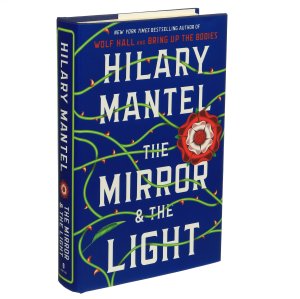 I have finished it: the third and final installment of Hilary Mantel’s Wolf Hall Trilogy, all 784 pages of it. (Hardback count, though I read the e-book). And what a long, strange trip it’s been….
I have finished it: the third and final installment of Hilary Mantel’s Wolf Hall Trilogy, all 784 pages of it. (Hardback count, though I read the e-book). And what a long, strange trip it’s been….
I’m really eager to read media reviews of this book, but I want to note my own impressions, first. Going back over some of the passages I’ve highlighted, I’m struck first of all by the wealth of sardonic humor. There’s the comment that appears in the title above, issuing from the angry mind of Thomas Cromwell. He and others have just witnessed the beheading of Anne Boleyn.
Here is how the novel opens:
Once the queen’s head is severed, he walks away. A sharp pang of appetite reminds him that it is time for a second breakfast, or perhaps an early dinner. The morning’s circumstances are new and there are no rules to guide us. The witnesses, who have knelt for the passing of the soul, stand up and put on their hats. Under the hats, their faces are stunned.
Hungry, after that? Ugh. But if it’s meant to deliver a jolt, it succeeds.
Later, with jaunty irreverence, he remarks to his son Gregory:
‘It would be like the late queen to pin her head back on, pick up the sword and chase me to Whitehall.’
Serving the King’s Majesty takes Cromwell on one heck of a wild ride. For him, and for those who pursue a similar career path, the sensation of being near to supreme power, and possibly even exerting influence over it, is intoxicating. Me, I would rather be out in some distant field, as remote from royalty as possible, harvesting flax or some other needful quantity, or laboring in a kitchen somewhere helping to fashion one of the unique repasts, such as the one described here:
The eels come in, presented in two fashions: salted in an almond sauce, and baked with the juice of an orange. There is a spinach tart, green as the summer evening, flavoured with nutmeg and a splash of rosewater. The silver gleams; the napkins are folded into the shapes of Tudor roses; the coverpanes at each place are worked with silver garlands. ‘Bon appétit,’ he says to the ambassador. ‘I’ve had a letter.’
Falsehoods, outright lies, artful dissembling, plotting, deceiving – no bad act is off limits at this glittering court. One false move, one unguarded word, and you can find yourself imprisoned in the tower, awaiting interrogation and God knows what else. Or, as Thomas Cromwell learns to his grief, acts off loyalty and resourcefulness can be turned into something else quite other by those same interrogators. Love can curdle and become hate in a matter of hours. – even minutes.
(In Act Two Scene One of As You Like It, Duke Senior, exiled from the court, has taken refuge in the Forest of Arden. Unexpectedly, he finds this a rather pleasant experience:
And this our life exempt from public haunt
Finds tongues in trees, books in the running brooks,
Sermons in stones and good in every thing.
I would not change it.
It is much the better place, to be “exempt from public haunt.”)
Careful attention must be paid to who is who among a vast array of characters. Dame Hilary does provide a list at the front of the novel, and a very intimidating roster it is:
THE RECENTLY DEAD
Anne Boleyn, Queen of England.
Her supposed lovers:
George Boleyn, Viscount Rochford, her brother. (Yes – her brother!)
Henry Norris, chief of the king’s privy chamber.
Francis Weston and William Brereton, gentlemen in the king’s circle.
Mark Smeaton, musician.
THE CROMWELL HOUSEHOLD
Thomas Cromwell, later Lord Cromwell, Secretary to the king, Lord Privy Seal, and Vicegerent in Spirituals: that is, the king’s deputy in the English church.
Gregory, his son, only surviving child of his marriage to Elizabeth Wyks.
Mercy Prior, his mother-in-law. Rafe Sadler, his chief clerk, brought up within the family: later in the king’s household.
Helen, Rafe’s wife. Richard Cromwell, his nephew, married to Frances Murfyn.
Thomas Avery, household accountant. Thurston, chief cook.
Dick Purser, keeper of the guard dogs. Jenneke, Cromwell’s daughter. (Invented character) Christophe, a servant. (Invented character)
Mathew, a servant, formerly of Wolf Hall. (Invented character)
Bastings, the bargemaster. (Invented character)
And on it goes, through The King’s Family and Household (8), The Seymour Family (5), Politicians and Clergy (12), Courtiers and Aristocrats (17), Household of the King’s Children (3), At the Convent in Shaftsebury (2), Henry’s Dynastic Rivals (7), Diplomats (8), In Calais (4), At the Tower of London (2), Cromwell’s Friends (5). Oh – and there are two family trees – the royal family, naturellement.
Am I trying to dissuade you from tackling this formidable tale? Heaven forfend! You surely do not want to miss out on all the fun. And besides, quite a few of the characters in the above accounting are quite minor. It’s just that – well, be aware, and keep your wits about you. (No doubt, Thomas Cromwell himself would advise the same.)
At one point, Cromwell’s son Gregory observes, rather artlessly: ‘It’s no treason to say all men are mortal.’ His father has a swift rejoinder: ‘No, but it’s not your best idea either.’ Then, reflecting on recent events, he thinks to himself:
…that was Anne Boleyn’s mistake. She took Henry for a man like other men. Instead of what he is, and what all princes are: half god, half beast.
With the death of Anne Boleyn, Henry is free to seek out a new wife. He already has is eye on the demure Jane Seymour, scion of the powerful, social-climbing Seymour clan. In the fullness of time, she provides him with the son he has been so desperately wanting – a true heir. The effort, however, costs her her life.
And so, back to the drawing boards; the search for Wife Number Four begins almost immediately. And for Thomas Cromwell, the previously invincible fixer, this is where things start to go wrong.
Hilary Mantel is a deeply gifted writer. She writes marvelous dialog; moreover, she can summon up, in a single sentence, an entire world. There’s this from Wolf Hall:
He remembers one night in summer when the footballers had stood silent, looking up. It was dusk. The note from a single recorder wavered in the air, thin and piercing. A blackbird picked up the note, and sang from a bush by the water gate. A boatman whistled back from the river.
The novels in this trilogy are written in the present tense. I don’t always like this mode of expression in fiction, but Mantel uses it convincingly here. It conveys a sense of unrelenting urgency entirely appropriate to the story. Something she uses that I find less convincing is the pronoun ‘he’ to designate Thomas Cromwell’s thoughts and utterances. Since most of the speaking in these novels – certainly in The Mirror & the Light – is done by men, it can be unclear at times as to who is doing the speaking (or thinking).
Cromwell is reflecting here:
On his journey today from London, he felt he brought guests: Norris and George Boleyn, young Weston, Mark, and William Brereton. As he stepped out of his barge they stepped out too; they stood on the banks of the Styx, waiting to cross. They died within minutes of each other, but that does not mean they are together now. The dead wander the lanes of the next life like strangers lost in Venice. Even if they met, what would they have to talk about? When they stood before their judges they edged away from each other, as if fearing contamination. Each man had made a case against the other, hoping he might save his own life.
As soon as Henry turns against someone – often for reasons known only to himself – he pulls away from that person and lets his minions mete out their punishment. Thomas Cromwell is no angel, but as this ineluctable process played out in his life, I developed a strong animosity toward Henry. It’s never a pretty sight, watching a third party carry out a powerful person’s dirty work. It is just plain cowardly, also lazy. As Isabella says in Measure For Measure:
O, it is excellentTo have a giant’s strength; but it is tyrannous
To use it like a giant.
***********************
********************
The first four wives:
This scene from the television version of Wolf Hall vividly conveys Anne Boleyn’s spitfire persona. She and Henry re examining a document brought to them by Cromwell, superbly played by Mark Rylance. (Damian Lewis is Henry; Claire Foy is Anne.)
Hilary Mantel has been very generous with appearances and interviews. Here is a short piece that I found illuminating:
The Laughing Cavalier by Frans Hals (1624)
Yes – It’s Frans Hals’s famous painting of the Laughing Cavalier. Except, chortled our (Osher Life Long Learning) lecturer Nora Hamerman, he is not laughing and he is not a cavalier!
He is obviously not laughing; rather, he is smiling in a somewhat secretive way. (It was considered bad form to portray a subject openly laughing – open mouthed, that is. The condition of the teeth probably had something to do with that proscription.) As for being a cavalier – meaning a knight or some type of nobleman – he was not that, either. Most likely he was a Dutch cloth merchant. Certainly his spectacular doublet is a fine advertisement for his wares!
Nora inquired whether any of us had actually seen this painting. “I have!” I exclaimed, delighted to recall my visit, several years ago, to London’s fabulous Wallace Collection. That’s where The Laughing Cavalier looks out with sly pleasure at delighted visitors.
A Sultry Month by Alethea Hayter
 One of my favorite books from the past few years is a nonfiction work entitled: A Sultry Month: Scenes of London Literary Life in 1846.
One of my favorite books from the past few years is a nonfiction work entitled: A Sultry Month: Scenes of London Literary Life in 1846.
To begin with, Alethea Hayter’s powers of description are formidable. They are shown in full spate in this passage, in which she brings the Duke of Wellington’s annual Waterloo Banquet to vivid life:
The low sunset light of that fiercely hot day came in through the six westward-facing windows of the Waterloo Gallery, competing with the light of the serried candles in the candelabra of the huge silver-gilt Portuguese Service, crowded with dancing nymphs, allegorical figures of the Continents, camels, horses, scorpions, which stretched the whole length of the table. The colors were all fierce and bright–scarlet uniforms, shining white tablecloth, harsh yellow damask on the walls staring out between the crowded frames of the pictures captured in Joseph Bonaparte’s carriage at the Battle of Vittoria.
There was gold and sheen everywhere–gilding on the doors and ceiling, shutters lines with looking-glass, epaulettes, decanters, medals, picture frames, chandeliers, everything glared and glittered….
A Sultry Month has a wonderful cast of characters: Robert Browning and Elizabeth Barrett, poets who against all odds made their love triumphant; John Keats, whose brief stay on Earth left us with much memorable verse; the Carlyles, Jane and Thomas, William Wordsworth, Charles Lamb and Mary Lamb – the list goes on. But perhaps the most memorable among them is a painter of whom I had not previously heard. His name is Benjamin Robert Haydon.
There is a genre of painting called history painting. The term refers not only to depictions of historical events but also to scenes from mythology and religion. The works were usually large, colorful, and action-packed. The Abduction of the Sabine Women (1635-1640) by Peter Paul Rubens is a good example:
By the nineteenth century, this type of subject matter was increasingly deemed outmoded, especially in England, where it had never really taken hold to begin with. But Benjamin Robert Haydon believed passionately in its relevance and its rightness. He worked steadily and, some would say, stubbornly to embody the best aspects of history painting in his own art.
In 1817, Haydon gave a dinner party which, over the years has achieved a unique sort of fame. In attendance at this gathering were all of the luminaries mentioned above: Keats, Wordsworth, the Lambs brother and sister, the Carlyles, and others. Haydon had two purposes in presenting this entertainment. He wanted to introduce young Keats to the venerable Wordsworth, and he wanted all the guests to see his rather fabulous, if somewhat bizarre, canvas entitled Christ Entering Jerusalem.
 The bizarre aspect stems from the fact that Haydon has included small portraits of his present day friends in this work. If you look closely at the three men at the extreme right, you can see Wordsworth, Charles Lamb, and Keats. (I’m pretty sure that the figure with the slightly bowed head is Wordsworth.) Apparently other of Haydon’s friends and acquaintances are also represented therein. Few of these individuals were particularly religious.
The bizarre aspect stems from the fact that Haydon has included small portraits of his present day friends in this work. If you look closely at the three men at the extreme right, you can see Wordsworth, Charles Lamb, and Keats. (I’m pretty sure that the figure with the slightly bowed head is Wordsworth.) Apparently other of Haydon’s friends and acquaintances are also represented therein. Few of these individuals were particularly religious.
The occasion was a great success, at least in the eyes of the host. This is what he wrote about it later in his autobiography:
It was indeed an immortal evening. Wordsworth’s fine intonation as he quoted Milton and Virgil, Keats’ eager inspired look, Lamb’s quaint sparkle of lambent humour, so speeded the stream of conversation, that in my life I never passed a more delightful time. All our fun was within bounds. Not a word passed that an apostle might not have listened to. It was a night worthy of the Elizabethan age, and my solemn Jerusalem flashing up by the flame of the fire, with Christ hanging over us like a vision, all made up a picture which will long glow upon
“that inward eye
Which is the bliss of solitude.”
Haydon began writing his autobiography in 1839. He was still working on it at the time of his death in 1846. I think it quite marvelous that he quotes from “I Wandered Lonely as a Cloud,” also known as “Daffodils,” a poem written by his friend Wordsworth in 1804.
There are at least two other books about Haydon’s “Immortal Dinner:” The Immortal Evening: A Legendary Dinner with Keats, Wordsworth, and Lamb by Stanley Plumly (2014), and The Immortal Dinner: A Famous Evening of Genius and Laughter in Literary London, 1817, by Penelope Hughes-Hallett (2002).
[A footnote, but an interesting one: Charles Lamb was a distinguished essayist. He is probably best remembered today for Tales of Shakespeare, on which he collaborated with his sister Mary. Mary was mentally unstable; in 1796, while experiencing a severe breakdown – what today we would probably call a psychotic break – she stabbed her mother to death with a kitchen knife. Charles remained devoted to his sister until his death in 1834. Peter Ackroyd’s novel The Lambs of London vividly recreates the turbulent events surrounding this calamity.]
I was completely spellbound by A Sultry Month; I look forward to reading it again.
Dorothy L. Sayers and the Lord Peter Wimsey novels
This delightful visual appeared in a recent issue of the London Review of Books. It reminded me of how much pleasure I’ve received from the Lord Peter Wimsey novels, both in print, on audio, and in the two television versions. (Click twice on this image and you should be able to read the text in the center.)
The first set of Wimsey episodes for television were aired on Masterpiece Theatre in the early 1970s. Starring as Lord Peter is the inimitable Ian Carmichael. Carmichael seemed eminently to the manor born, the ideal aristocrat of early twentieth century Britain, whose sometimes foppish ways and ready wit conceal a razor sharp mind and a firm sense of justice.
Here’s a trailer that capture’s the flavor of Carmichael’s performance (with apologize for the breakup at 32 secs).
Later, to this depiction of Wimsey, Edward Petherbridge added a vulnerable heart. First broadcast in the late 1980s, Petherbridge starred in three episodes: Strong Poison, Have His Carcase, and Gaudy Night. Together these comprise the story of Peter’s ardent pursuit of detective novelist Harriet Vane. The course of this true love ran anything but smooth – in Have His Carcase, Peter and Harriet have an argument that almost breaks them both, it is so full of anguish – and yet, and yet…
To my mind, theirs is an exceptionally compelling love story. And a surprisingly modern one as well. Told mainly from Harriet’s point of view, it treats of a woman who is desperate to retain her personal autonomy in the face of plenty of pressure, much of it coming, discreetly but relentlessly, from Peter. His is a love that will not be denied, but he is ever the gentleman, acting with restraint and deep respect. He does not wish to curtail Harriet in any way; rather, he wants to set her free to flourish in a world they both value. Only when she finally acknowledges this fact – and acknowledges her love for him – can she at last relent and give him the answer he so desperately craves.
There are eleven novels in the Lord Peter Wimsey series. I’ve either read or listened to all of them save Busman’s Honeymoon, the last, which was based on a play of the same name. I’ve enjoyed every one of them, but these three are my especial favorites:
I confess that the lengthy disquisition on campanology with which The Nine Tailors begins nearly stopped me in my tracks. I would have given up save for the fact that I was listening to Ian Carmichael’s marvelous reading. When once the plot got under way, I was captivated.
Due to an automotive mishap, Wimsey and his valet Bunter find themselves temporarily stranded in the little village of Fenchurch St Paul. This is a remote area in the East of England, flat and prone, at least at the time this book was written, to episodes of high water. Indeed, the novel’s climax features a flood of near Biblical proportion. Up until that point,, Peter has been investigating a crime – actually several crimes, with the added factor of assisting the local rector with the bringing off of a marathon bell ringing event – nine hours straight!
Here’s a short video of bell ringing at Westminster Abbey:
In the television version, Wimsey is played by Ian Carmichael and Bunter, by Glyn Houston. The Reverend Theodore Venables is portrayed by Donald Eccles in one of the most endearing performances in the entire series.
When I wrote about The Pale Horse by Agatha Christie, I included a quote by John Curran that exactly described my feelings upon reading that work. There is in that novel, he asserts, “…“…a genuine feeling of menace over and above the usual whodunit element.” I feel that the same is true of The Nine Tailors.
There’s a very insightful commentary on this program on the blog In So Many Words.
Here it is, the fateful bringing together of Harriet Vane and Lord Peter Wimsey. It happens in a courtroom. She’s standing trial for murdering her erstwhile lover Phillip Boyes. She is naturally in fear for her life. Peter, who’s observing the proceedings, swiftly comes to two conclusions: one, she’s innocent; and two, she’s the only woman in the world for him.
This is the novel’s first sentence:
There were crimson roses on the bench; they looked like splashes of blood.
 Finally, there is Gaudy Night. Many are the pleasures of this fine work. Returning to her alma mater by invitation from the faculty, Harriet is filled with justifiable pride at being a graduate of Shrewsbury, an Oxford college. (The actual college is Somerville, named for mathematician and science writer Mary Somerville.)
Finally, there is Gaudy Night. Many are the pleasures of this fine work. Returning to her alma mater by invitation from the faculty, Harriet is filled with justifiable pride at being a graduate of Shrewsbury, an Oxford college. (The actual college is Somerville, named for mathematician and science writer Mary Somerville.)
They can’t take this away, at any rate. Whatever I may have done
since, this remains. Scholar;, Master of Arts;, Domina;, Senior Member
of this University…, a place achieved, inalienable, worthy of reverence.
Despite Harriet’s success as an author, she cannot help longing for the insularity of the academic life:
As Harriet followed Miss Lydgate across the lawn, she was visited by
an enormous nostalgia. If only one could come back to this quiet place,
where only intellectual achievement counted , if one could work here
steadily and obscurely at some close-knit piece of reasoning, undistracted
and uncorrupted by agents, contracts, publishers, blurb-writers, inter-
viewers, fan-mail, autograph-hunters, notoriety-hunters, and com-
petitors ; abolishing personal contacts, personal spites, personal
jealousies, getting one’s teeth into something dull and durable ; maturing
into solidity like the Shrewsbury beeches — then, one might be able to
forget the wreck and chaos of the past, or see it, at any rate, in a truer
proportion Because, in a sense, it was not important The fact that one
had loved and sinned and suffered and escaped death was of far less
ultimate moment than a single footnote in a dim academic journal….
Alas, there is a serpent in this Eden. Although no murder takes place in Gaudy Night, there are a number of sinister and very unnerving pranks being played on Shrewsbury residents. It is these that have brought Harriet back to the college. Can she locate the culprit, without involving the police? It remains to be seen.
Eventually Peter appears on the scene; he lends his support and unerring instincts to help her solve the mystery. And, inevitably, he and Harriet are due for a final reckoning.
Novelist Jill Paton Walsh has written four novels which continue the story of Harriet and Lord Peter. Of these, I’ve only read the most recent, The Late Scholar. I enjoyed it very much.
British Royalty: an AAUW Readers discussion
Inspired by the recent wedding of Meghan Markle and Prince Harry,, we members of AAUW Readers decided to read up on the British royal family. Here’s how the meeting went:
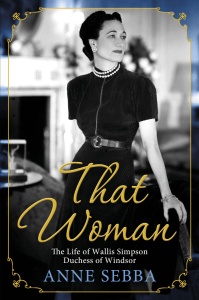 That Woman: The Life of Wallis Simpson, Duchess of Windsor, by Anne Sebba (recommended by Barbara). Just when everyone thought that the subject of Wallis Warfield Simpson had been done to death, along came Sebba’s book, replete with new and intriguing revelations.
That Woman: The Life of Wallis Simpson, Duchess of Windsor, by Anne Sebba (recommended by Barbara). Just when everyone thought that the subject of Wallis Warfield Simpson had been done to death, along came Sebba’s book, replete with new and intriguing revelations.
I was reminded of a memorable scene described by Selina Hastings in her biography of Somerset Maugham. The year is 1936. Four men are seated a table, hunched over a radio – perhaps I should say “wireless,” this being England – listening to the abdication of speech of Edward VIII. One of the men is Maugham; the identity of two others I don’t recall; the identity of the fourth man was Graham Greene. (Oh, right: I should have designated him The Third Man.)
 Referring to Victoria, the PBS Masterpiece production, Pat filled us in on the culinary aspects of Victoria’s reign, especially as regards Charles Elmé Francatelli, her chef from 1840 to 1842. I had never heard of this person, but I should have. His books, or versions of them, are available on Amazon. Some of the texts are available online, at Internet Archive, Project Gutenberg, and other locations. (See the Wikipedia entry for links to these.)
Referring to Victoria, the PBS Masterpiece production, Pat filled us in on the culinary aspects of Victoria’s reign, especially as regards Charles Elmé Francatelli, her chef from 1840 to 1842. I had never heard of this person, but I should have. His books, or versions of them, are available on Amazon. Some of the texts are available online, at Internet Archive, Project Gutenberg, and other locations. (See the Wikipedia entry for links to these.)
From The Cook’s Guide and Housekeeper’s and Butler’s Assistant (1861), here is a recipe for “The Stock Pot:”
Place in a well tinned stock pot, capable of containing about eight gallons, about ten pounds of leg or shin of beef, and an equal weight of knuckles of veal, cut into pieces; to these add the carcass of an old hen and a knuckle of ham; moisten with two quarts of broth or water; set the stock-pot on the fire to boil down sharply until the liquid has become reduced to a glaze .
The heat must then be slackened by placing ashes upon the fire in order to abate its fierceness, so as to allow the glaze to attain a light-brown colour, with out its being burnt and carbonized: if this latter accident happen, it tends considerably to diminish the stomachic qualities and flavour of the stock or consommé.
As soon as the consolidation of the glaze is effected, make up the fire, fill up the stock-pot, and when it boils, skim it thoroughly; after which garnish with six carrots, four onions, three turnips, four leeks, two heads of celery, and an onion in which twelve cloves have been stuck; season with three ounces of salt, and having allowed the stock to continue gently boiling for about five hours, remove the grease from its surface; and then proceed to strain it through a sieve into clean pans for use, as will be directed hereafter.
Queen Victoria was the subject of several of the group’s selections:
Jean recommended Victoria and Albert: A Royal Love Affair, by Daisy Goodwin and Sara Sheridan, while Sharon favored Her Little Majesty: The Life of Queen Victoria, by Carolly Erickson. Caroline brought We Two: Victoria and Albert: Rulers, Partners, Rivals, by Gillian Gill. Debbie’s recommendation was Becoming Queen Victoria: The Tragic Death of Princess Charlotte and the Unexpected Rise of Britain’s Greatest Monarch by Kate Williams
Queen Elizabeth II came in for several mentions. Marge recommended Queen and Country: The Fifty-Year Reign of Elizabeth II, by William Shawcross, while Debbie favored Young Elizabeth: The Making of the Queen by Kate Williams.
You’ll note that two of the recently mentioned titles were authored by Kate Williams. Williams comes trailing numerous accolades from academia (including a PhD from Somerville College, Oxford, alma mater of Dorothy L. Sayers, Iris Murdoch, and numerous additional women of note); she is also a frequent TV commentator (see YouTube). Her biography of Emma Hamilton, the mistress of Vice Admiral Horatio Nelson, was a great read. 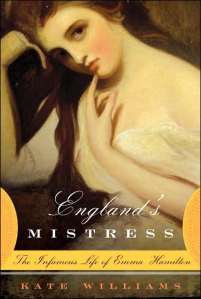
Suzanne recommended the following three titles:
The Royal Family: A Year by Year Chronicle of the House of Windsor, Paragon Books. I had a chance to page through this briefly; the pictures are gorgeous.
Figures in Silk by Vanora Bennett is a novel set in 15th century England. Main characters are John Lambert, a silk merchant with marriageable daughters, and Richard, Duke of Gloucester, who aspires to be king.
A Short History of England, by Simon Jenkins. Now this one looked familiar to me, so I began searching for it in one of my vast book repositories and lo! It was there. Yet another enticing volume, patiently waiting to be read.

To the right of A Short History of England can be seen additional titles by Sir Simon, plus three titles by my brother, Richard S. Tedlow (and some health items that sneaked into the picture.)
 I began by recommending Restoration by Rose Tremain and film by the same name. Tremain’s wonderfully vivid and involving novel of late 17th century England centers on one of Charles II’s many peccadilloes and a hapless doctor, Robert Merivel, who is ensnared by the King’s scheming. I remember really loving the film when it first came out. This trailer, however, makes it appear somewhat over the top, in several respects. It’s got a terrific cast, though, and might be enjoyable viewing, if one is in the mood for it:
I began by recommending Restoration by Rose Tremain and film by the same name. Tremain’s wonderfully vivid and involving novel of late 17th century England centers on one of Charles II’s many peccadilloes and a hapless doctor, Robert Merivel, who is ensnared by the King’s scheming. I remember really loving the film when it first came out. This trailer, however, makes it appear somewhat over the top, in several respects. It’s got a terrific cast, though, and might be enjoyable viewing, if one is in the mood for it:
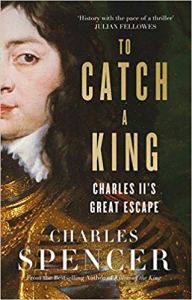 To Catch a King: Charles II’s Great Escape, by Charles Spencer, 9th Earl Spencer and younger brother of Princess Diana. The book got off to a slow start but picked up steam fairly quickly, until I didn’t want to read anything else until I’d finished it. Charles’s great escape actually consists of several escapes, made possible by his loyal followers and often just barely succeeding. The forces of Oliver Cromwell hunted the Royalists relentlessly, but Charles and company always manages to stay a step ahead of them. I already knew the general outline of the story, but Spencer puts you right in the thick of events in a breathtaking way. Great story, great book.
To Catch a King: Charles II’s Great Escape, by Charles Spencer, 9th Earl Spencer and younger brother of Princess Diana. The book got off to a slow start but picked up steam fairly quickly, until I didn’t want to read anything else until I’d finished it. Charles’s great escape actually consists of several escapes, made possible by his loyal followers and often just barely succeeding. The forces of Oliver Cromwell hunted the Royalists relentlessly, but Charles and company always manages to stay a step ahead of them. I already knew the general outline of the story, but Spencer puts you right in the thick of events in a breathtaking way. Great story, great book.


